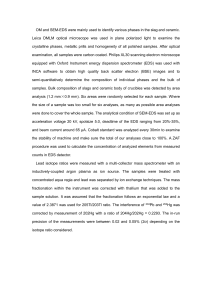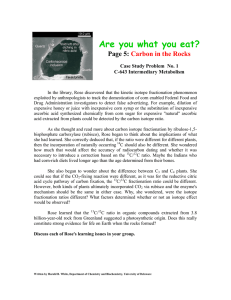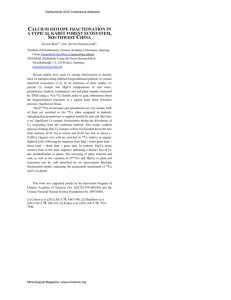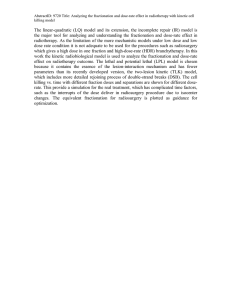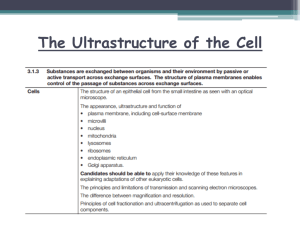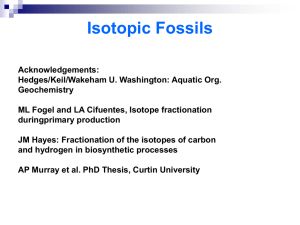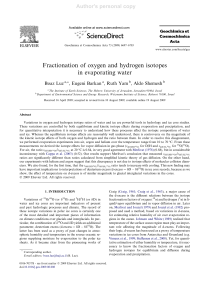Estimating isotope fractionation driven by nuclear size E.
advertisement
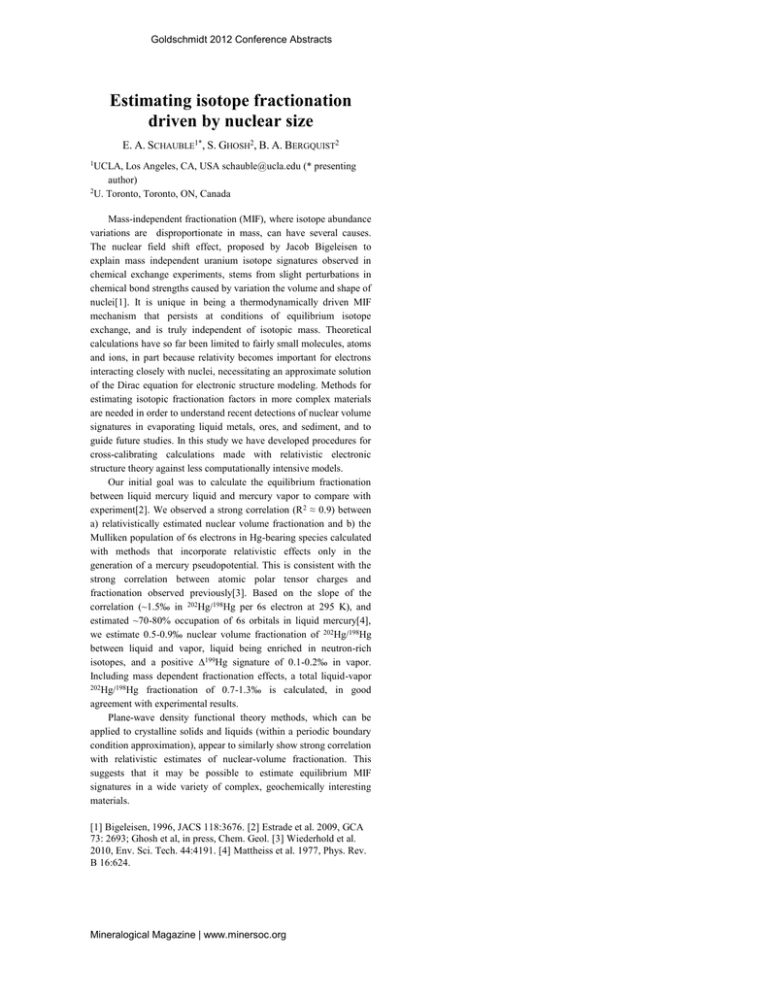
Goldschmidt 2012 Conference Abstracts Estimating isotope fractionation driven by nuclear size E. A. SCHAUBLE1*, S. GHOSH2, B. A. BERGQUIST2 1UCLA, Los Angeles, CA, USA schauble@ucla.edu (* presenting author) 2U. Toronto, Toronto, ON, Canada Mass-independent fractionation (MIF), where isotope abundance variations are disproportionate in mass, can have several causes. The nuclear field shift effect, proposed by Jacob Bigeleisen to explain mass independent uranium isotope signatures observed in chemical exchange experiments, stems from slight perturbations in chemical bond strengths caused by variation the volume and shape of nuclei[1]. It is unique in being a thermodynamically driven MIF mechanism that persists at conditions of equilibrium isotope exchange, and is truly independent of isotopic mass. Theoretical calculations have so far been limited to fairly small molecules, atoms and ions, in part because relativity becomes important for electrons interacting closely with nuclei, necessitating an approximate solution of the Dirac equation for electronic structure modeling. Methods for estimating isotopic fractionation factors in more complex materials are needed in order to understand recent detections of nuclear volume signatures in evaporating liquid metals, ores, and sediment, and to guide future studies. In this study we have developed procedures for cross-calibrating calculations made with relativistic electronic structure theory against less computationally intensive models. Our initial goal was to calculate the equilibrium fractionation between liquid mercury liquid and mercury vapor to compare with experiment[2]. We observed a strong correlation (R 2 ≈ 0.9) between a) relativistically estimated nuclear volume fractionation and b) the Mulliken population of 6s electrons in Hg-bearing species calculated with methods that incorporate relativistic effects only in the generation of a mercury pseudopotential. This is consistent with the strong correlation between atomic polar tensor charges and fractionation observed previously[3]. Based on the slope of the correlation (~1.5‰ in 202Hg/198Hg per 6s electron at 295 K), and estimated ~70-80% occupation of 6s orbitals in liquid mercury[4], we estimate 0.5-0.9‰ nuclear volume fractionation of 202Hg/198Hg between liquid and vapor, liquid being enriched in neutron-rich isotopes, and a positive 199Hg signature of 0.1-0.2‰ in vapor. Including mass dependent fractionation effects, a total liquid-vapor 202Hg/198Hg fractionation of 0.7-1.3‰ is calculated, in good agreement with experimental results. Plane-wave density functional theory methods, which can be applied to crystalline solids and liquids (within a periodic boundary condition approximation), appear to similarly show strong correlation with relativistic estimates of nuclear-volume fractionation. This suggests that it may be possible to estimate equilibrium MIF signatures in a wide variety of complex, geochemically interesting materials. [1] Bigeleisen, 1996, JACS 118:3676. [2] Estrade et al. 2009, GCA 73: 2693; Ghosh et al, in press, Chem. Geol. [3] Wiederhold et al. 2010, Env. Sci. Tech. 44:4191. [4] Mattheiss et al. 1977, Phys. Rev. B 16:624. Mineralogical Magazine | www.minersoc.org
